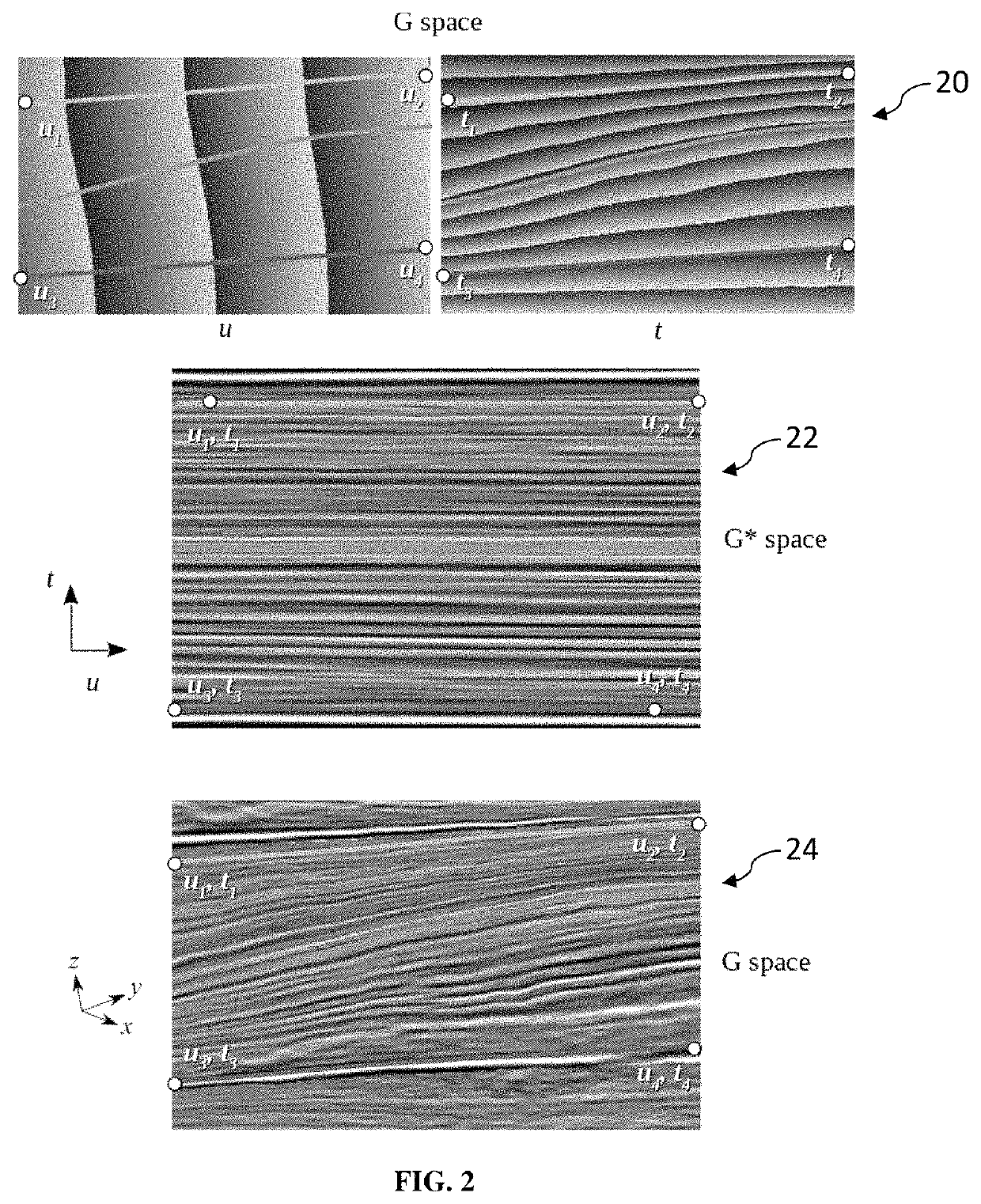Building accurate training images for automatic seismic interpretation
- Summary
- Abstract
- Description
- Claims
- Application Information
AI Technical Summary
Benefits of technology
Problems solved by technology
Method used
Image
Examples
Embodiment Construction
[0007]Embodiments of the invention provide new techniques to improve the reliability, accuracy and speed of generating training images for automatic seismic interpretation, by using real-world recorded seismic images or data as a “parent” or ancestor seismic image as a seed to proliferate and grow new synthetic “child” or descendant training images. Variations in the parent image emerge as it is transformed from a present-day geological space to a depositional space depicting the past deposition of the layer, and back again.
[0008]In an embodiment of the invention, real-world parent seismic images may be automatically propagated to efficiently generate a collection of realistic synthetic child training images to train an artificial intelligence or other data driven model, such as a neural network, for accurate automatic seismic interpretation. A three-dimensional (3D) structural model in a present-day geological space (e.g., GB) depicting subsurface locations of particles (e.g., in r...
PUM
 Login to View More
Login to View More Abstract
Description
Claims
Application Information
 Login to View More
Login to View More - R&D
- Intellectual Property
- Life Sciences
- Materials
- Tech Scout
- Unparalleled Data Quality
- Higher Quality Content
- 60% Fewer Hallucinations
Browse by: Latest US Patents, China's latest patents, Technical Efficacy Thesaurus, Application Domain, Technology Topic, Popular Technical Reports.
© 2025 PatSnap. All rights reserved.Legal|Privacy policy|Modern Slavery Act Transparency Statement|Sitemap|About US| Contact US: help@patsnap.com



